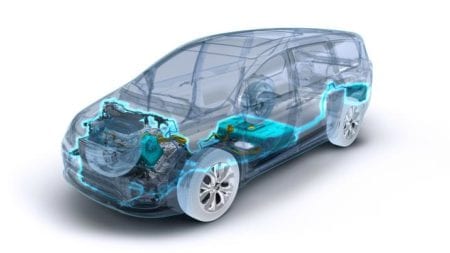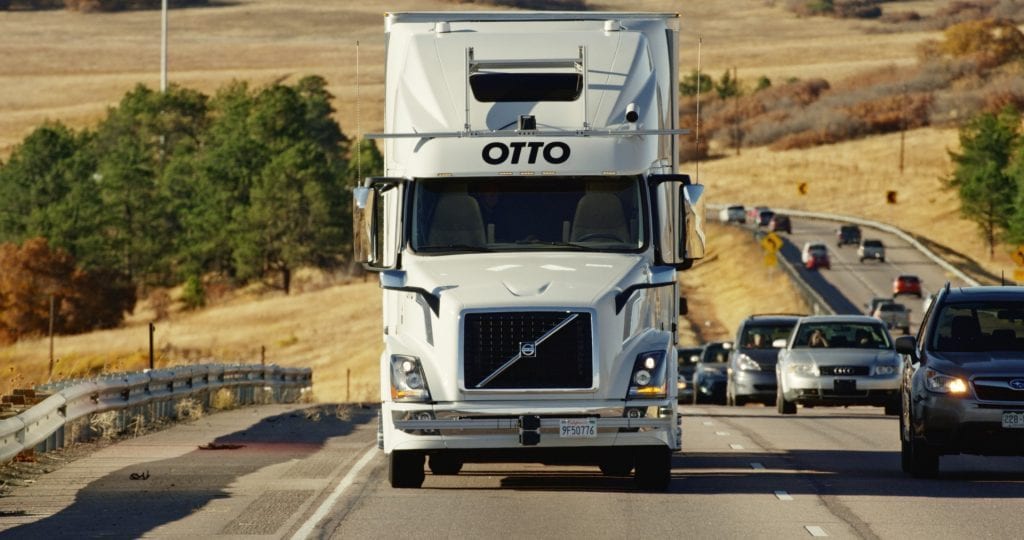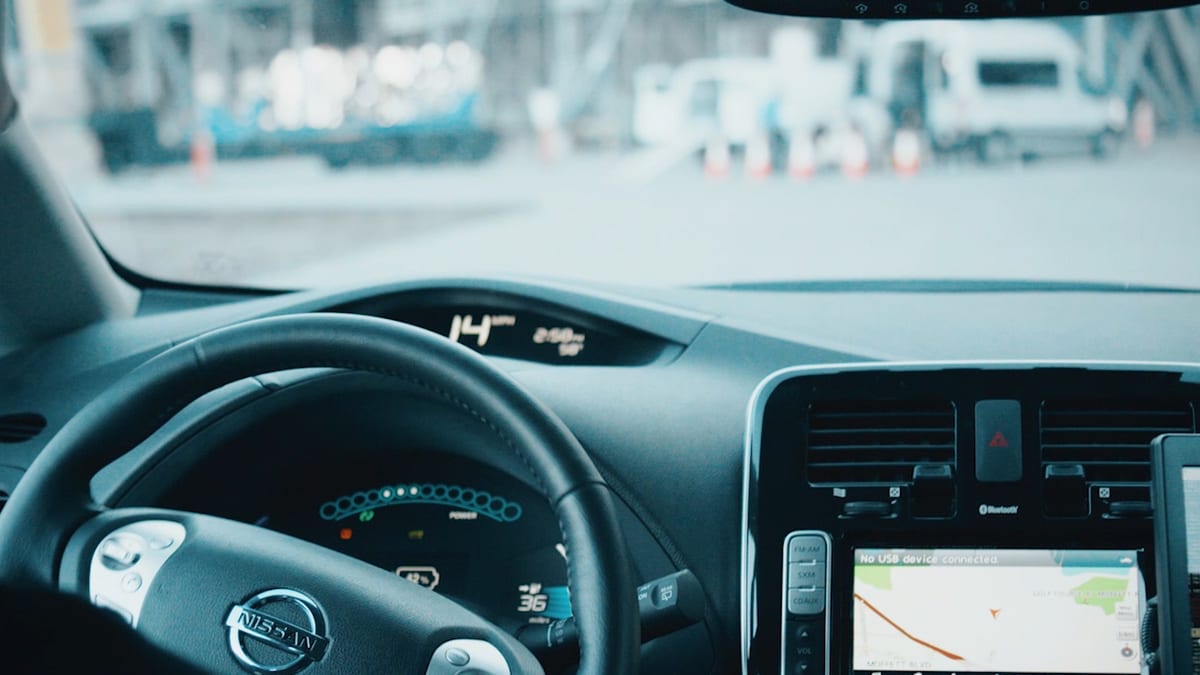Letting go of the wheel to turn ‘drive time’ into ‘get stuff done time.’
Editor’s note: This story first appeared in the latest issue of Field Service, a quarterly print magazine from Field Service Digital and ServiceMax. Check out the full magazine in print or online.
The digital service revolution isn’t just visible in the mobile tools technicians use, or the IoT-enabled machines they service. Soon, it will also affect techs in the driver’s seat where they spend considerable time every day shuttling between job sites.
By freeing technicians from the wheel, self-driving technologies could convert all of that wasted drive time into work time, with huge implications for productivity — and your company’s bottom line.
“We often hear about service organizations shaving a few minutes off their technicians’ administrative duties and saving the company millions of dollars,” says Patrice Eberline, VP of global customer transformation at ServiceMax. “Imagine if techs could spend all of their drive-time hours productively. The efficiency gains and cost savings would be huge.”
The automotive industry still needs to overcome three barriers before fully autonomous vehicles gain mass-market traction, but recent developments signal that the productivity boon of self-driving fleets might be around the next bend.
Barrier No. 1: Cost
Development: Waymo-Driven Chrysler Pacifica Minivan
 In December, Waymo (formerly Google’s self-driving car project) and Fiat Chrysler announced that 100 Chrysler Pacifica Hybrid minivans, equipped with Waymo’s fully self-driving technology, would be ready for testing early this year.
In December, Waymo (formerly Google’s self-driving car project) and Fiat Chrysler announced that 100 Chrysler Pacifica Hybrid minivans, equipped with Waymo’s fully self-driving technology, would be ready for testing early this year.
The big news here is that Waymo brought design and production of all self-driving hardware and software in-house. “We can build a hardware suite where each sensor complements the strength of all others. Like a person’s five senses, our sensors are more useful and more powerful when we put them all together,” Waymo CEO John Krafcik said in a speech at the Detroit Auto Show in January.
And he said that by designing its own LIDAR, which uses lasers to create 360-degree 3D maps of the vehicle’s surroundings, Waymo has been able to improve performance, while taking 90 percent out of the cost — from about $75,000 a few years ago to around $7,500 today.
If Waymo can spread production of their self-driving systems across multiple automakers and models, this would further reduce the cost, making autonomy more affordable for mass-market growth — and more likely that we’ll soon see autonomous vehicles in field service.
 Barrier No. 2: Confidence
Barrier No. 2: Confidence
Development: Nissan’s Seamless Autonomous Mobility
At the Consumer Electronics Show in January, Nissan introduced an interesting solution that could give human passengers greater confidence in autonomous vehicle systems. It’s called Seamless Autonomous Mobility, or S.A.M.
How does it work? When the vehicle encounters an unpredictable situation — such as new road construction — it brings itself to a safe stop and requests help from the command center. There, a mobility manager uses vehicle images and sensor data to assess the situation, choose a correct action and create a safe path around the obstruction. Once the vehicle has cleared the area, it resumes fully autonomous operations.
“I like the concept of SAM and think it would be a way to give customers an additional level of comfort when an autonomous fleet is first introduced,” says David Alexander, senior analyst with Navigant Research. “Like other shared technology, such as vehicle-to-vehicle systems, it will only be effective in a large-scale open system if all vehicles share the same system. Getting other OEMs on board is the challenge here.”
 Barrier No. 3: Complexity
Barrier No. 3: Complexity
Development: Uber Freight (Otto) Interstate Autopilot System
It’s one thing for self-driving sensors to be installed by a single car or truck manufacturer. But what about when a third-party upfitter mounts a truck body on a chassis or there’s a trailer attached to a Class 8 tractor? The more parties involved in the final construction of the truck, the greater the complexity of integrating autonomous driving sensors with the truck chassis.
But Uber Freight, with its acquisition last year of self-driving truck startup Otto, is confronting this challenge head-on by building a self-driving system that integrates with the chassis. And the company put that system to the test last October, with an autonomous beer run in Colorado. One of its retrofitted Volvo tractor-trailers hauled more than 50,000 cans of Budweiser 120 miles on Interstate 25, while the Otto system controlled the truck’s acceleration, braking and steering exit to exit without human intervention.
“Retrofitting vehicles is a different approach to automakers that are developing [autonomous systems] from the ground up,” says Sam Barker, an analyst for Juniper Research. “This method certainly will reduce time to market and the initial cost for logistics players in the U.S. However, the safety of these systems will be paramount and are likely to be judged meticulously.”
The Bottom Line
When the Google Self-Driving Car project launched in 2009, the idea of robot cars still seemed like science fiction. But today, traditional automakers, Silicon Valley tech giants and startups are racing to launch their self-driving systems by the beginning of the next decade.
“Service leaders often have to choose whether to invest in cutting drive-time or administrative tasks when looking for new efficiencies,” Eberline says. “Self-driving technology will make that decision moot since drive time and admin time will be the same thing.”
The time is now to start thinking about how your service organization could soon capitalize on self-driving tech to improve employee productivity and accelerate toward greater market share.


Sorry, self-driving vehicles are just not going to happen, unless a “plug & go” system is developed for major roads – something akin the transportation system in the movie Minority Report. There are simply too many variables to track and account for, especially construction (lane shifts, temporary detours, flagmen), weather, and other human drivers. I think we’re seeing this in self-driving vehicle accidents.